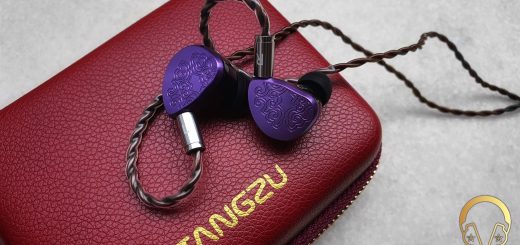Akoustyx R-210 & Akoustyx R-220 Review

Akoustyx R-210 & R-220 Review
Introduction:
Akoustyx LLC is an American company based in San Jose, California with an assembly faculty in Nashville, Tennessee.
The motto of the company is;
After all, we’re music lovers & musicians too!
The R2 Series started off as an alternative to the in-ear monitors, more along of the direction of regular earphones with a minimalist look.
The R2 Series has two members the R-210 with a “Studio Reference” acoustic signature and the R-220 with “Reference Dual-Cross” acoustic signature. The R-210 features a single Balanced Armature (BA) driver, while the R-220 has 2 x Balanced Armature drivers. Those drivers are proprietary tuned by the company Knowles.
Now I will compare the Akoustyx R-210 with the R-220, which have a quite different sound tuning.
Akoustyx Webiste: https://akoustyx.com

Disclaimer:
The Akoustyx R-210 and Akoustyx R-220 was provided to me by Akoustyx LLC free of charge for review purposes. I am not affiliated with Akoustyx LLC or any third person beyond this review and these words reflect my true and unaltered opinions about these products.
The Price:
The actual price for the Akoustyx R-210 is for $119,99, while the Akoustyx R-220 has a price of $199,99.
Purchase Links:
- Akoustyx R-210 : https://akoustyx.com/products/r-210
- Akoustyx R-220 : https://akoustyx.com/products/r-220
Package and Accessories:
Both the R-210 and the R-220 came in small rectangular box, which is wrapped with a blue cardboard that shows the product illustrations and some product brandings.

The box of each model contains the same accessories which are listed below;
- 1 pair x of Akoustyx R-210 / Akoustyx R-220 In-Ear Monitors
- 1 pcs x Detachable cable with MMCX (Micro Miniature Coaxial) connectors
- 3 pairs x Single Flange Silicone Ear Tips (S, M, L sizes)
- 1 pair x Double Flange Silicone Ear Tips
- 3 pairs x Ear hook (S, M, L sizes)
- 1 pair x Comply T-100 Foam Tips
- 1 piece x Neoprene padded storage/carry case
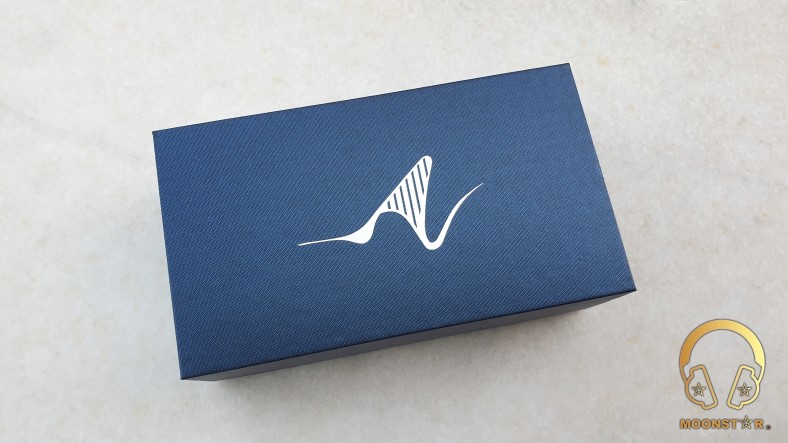
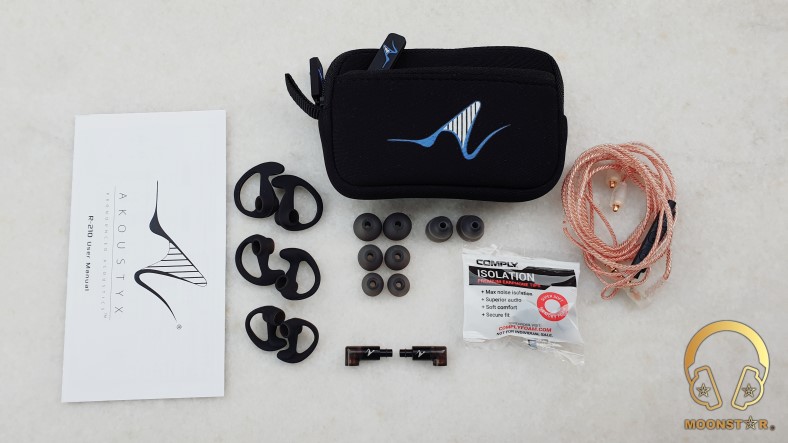

The package of both IEM’s is including 3 pairs single flange (comes in 3 different sizes “S/M/L”) and 1 pair of double flange “non-allergic” silicon ear tips which are very comfortable to insert in to my ear channels. Both IEM’s came also with 1 pair of Comply™ T-100 foam ear tips.
Inside the box are aslo 3 pairs of slicone ear-hooks (the so called Earlock® retention kit), which are a nice addition.
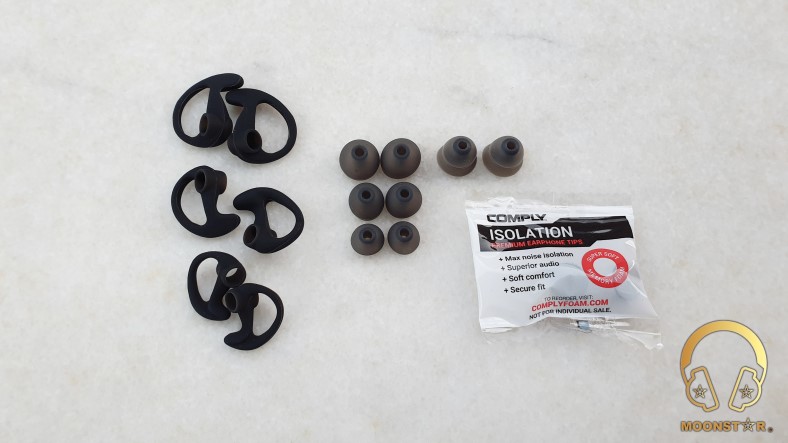
The Neoprene padded carry case that is included in the box of both IEM’s looks stylish and is pretty useful.
Design and Build Quality:
Both the R-210 and the R-220 sharing the same design language with a tube like design which reminds me directly to those of the Etymotic series In-Ear Monitors. The main differences are the internals (1 BA versus 2 BA’s) and the color of the monitor shells, which is a combination of aluminum-alloy and polycarbonate.

The aluminum part of the R-210 main body is in blue color (Tech Blue), while the same part of the R-220 is in black color.
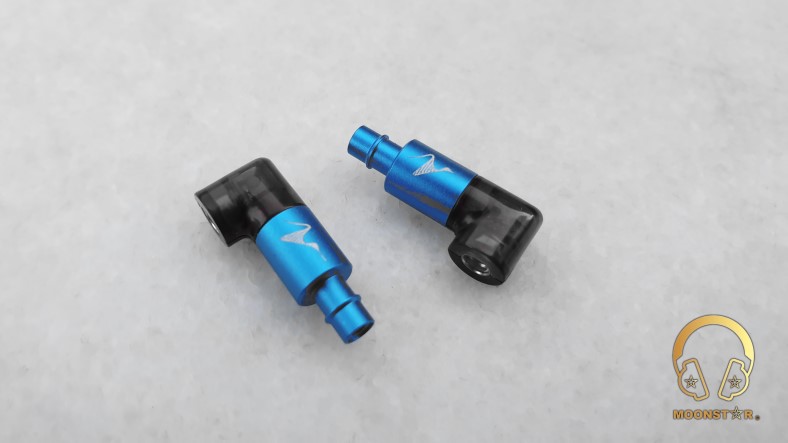
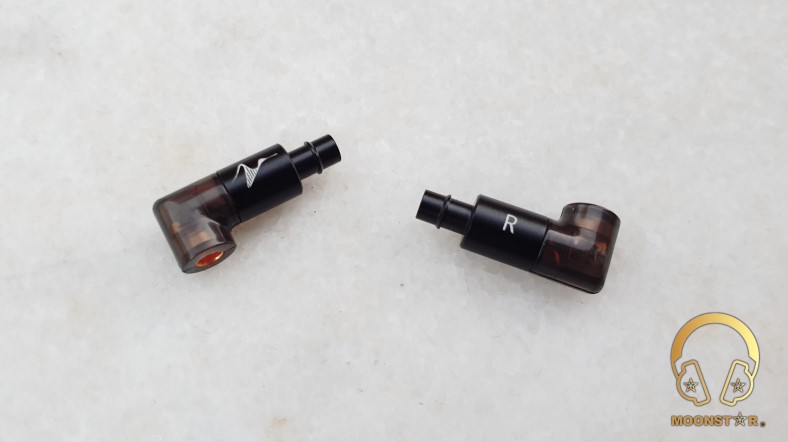
This part features a pretty thin and long sound nozzle, which has a small lip to hold the ear tips.
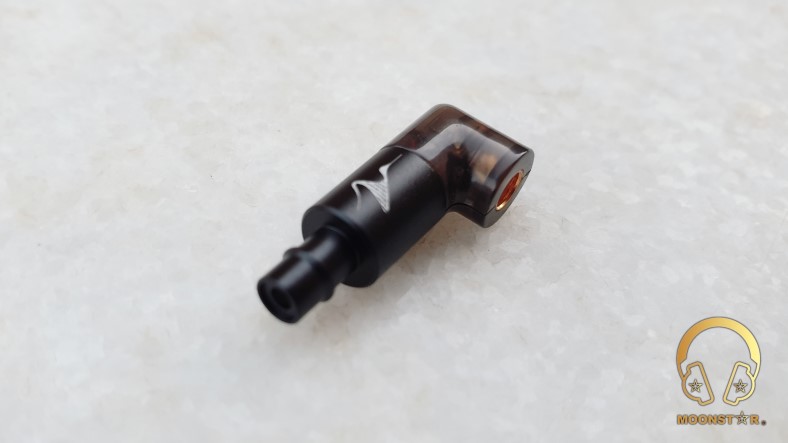
This part sports also the brand logo and the left/right markings.
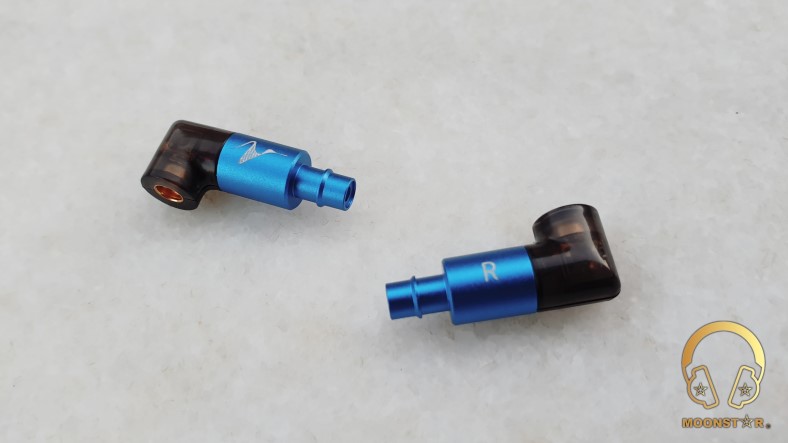
The second part (back part) is made of semi transparent polycarbonate ant features the MMCX (Micro Miniature Coaxial) female connectors.

The overall build quality is not of “ultra high quality”, but is pretty ok for IEM’s at this price range.
The Cable:
Both the Akoustyx R-210 and the R-220 are coming with the same detachable cable with MMCX connectors and a length of approx 1.2 meters (4.0 ft).
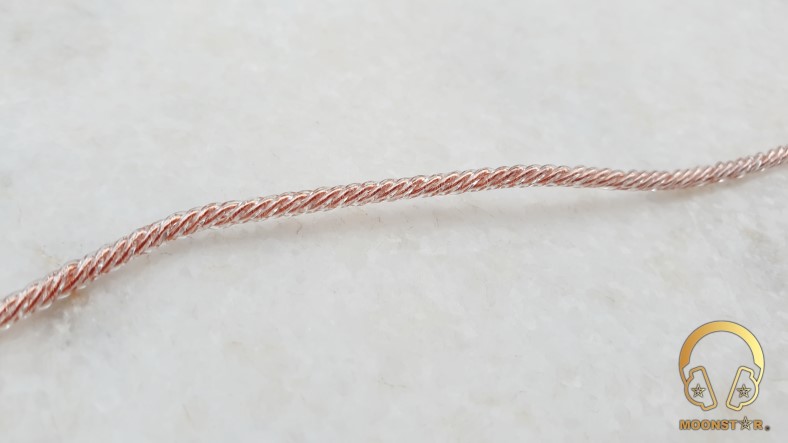
It is a Multi-Braided Monocrystalline grade oxygen-free copper cable which features a 3-Button in-line microphone that works with both, IOS & Android devices.

The MMCX connectors are protected with a semi transparent white plastic housing while the MMCX connectors are gold plated. A complains comes to the visibility of the left/right markings that is not very good.
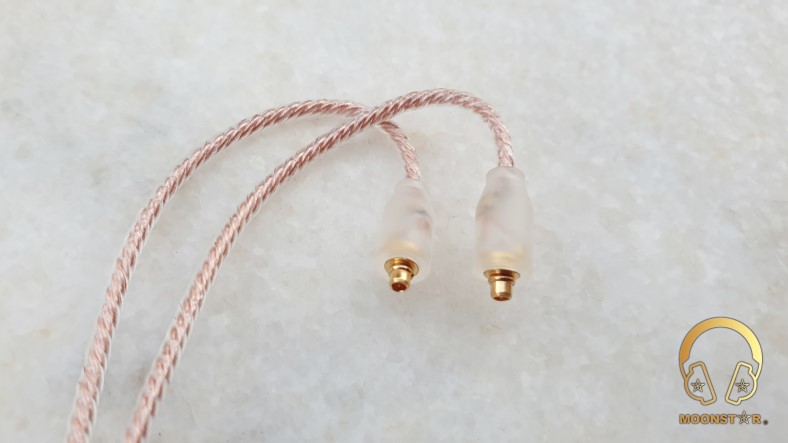
Near the MMCX connectors are thin heat shrink ear guides for a more comfortable wearing experience.

The Y- Slitter and the chin slider are made of the same semi transparent white plastic material that we have seen on the MMCX connector.
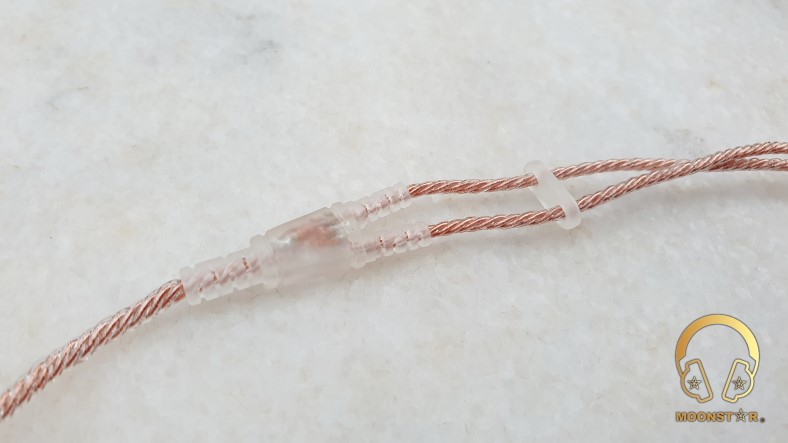
The microphone with 3 multifunctional buttons is in black color and is positioned on the left side of the cable.
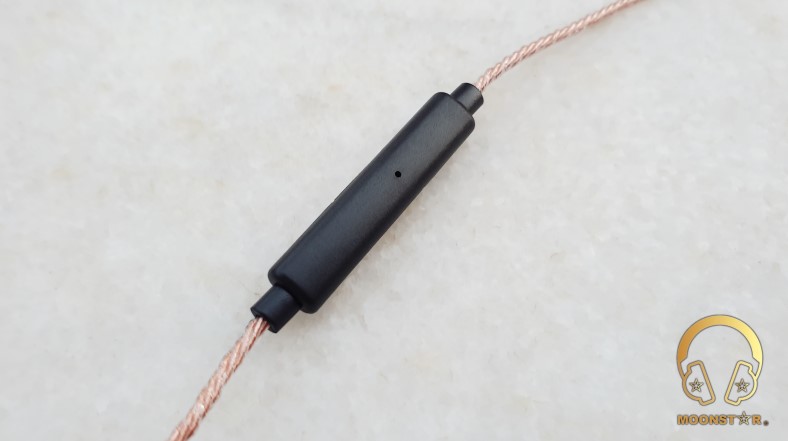

The gold plated 3.5mm (TRS) single ended headphone jack has an L angled profiled and is protected by the same plastic housing.
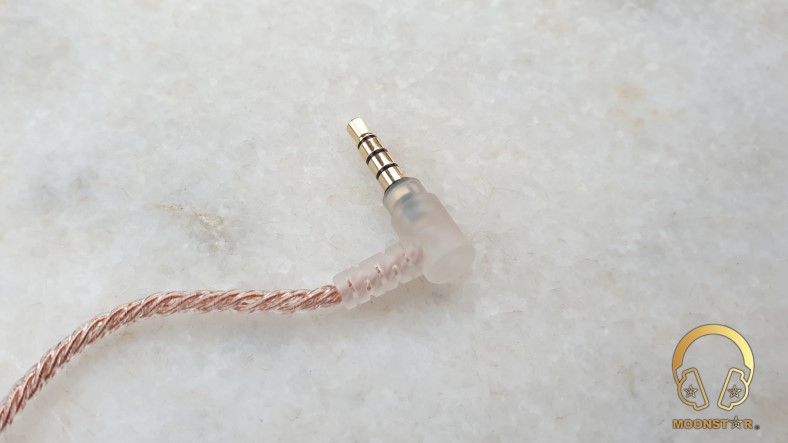
Comfort and Isolation:
The monitor housing of both IEM’s is very lightweight and very comfortable to wear thanks to the small tube like design. The ear hooks which are included to the package are very useful if you want to use those IEM’s on the go or while jogging, etc.
The noise isolation of both IEM’s is on an average level, while it is quite acceptable for the use in relative noisy environments like metro, bus or train.
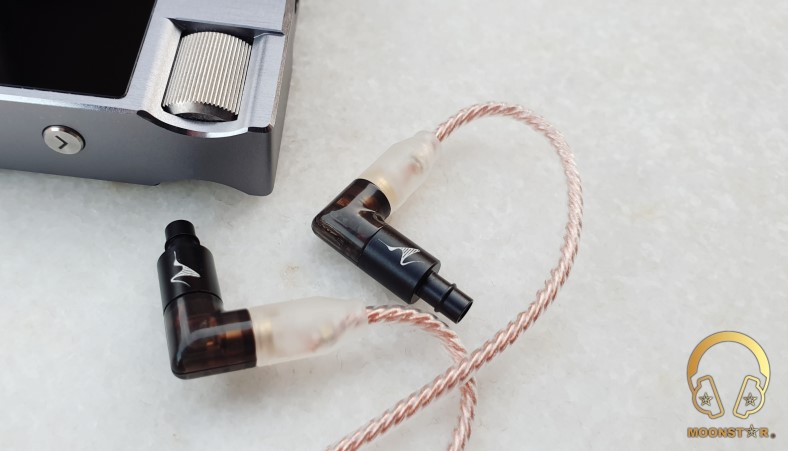
Some Technical Specifications:
Akoustyx R-210:
- Driver Type : Single Balanced Armature Driver
- Impedance : 50 Ω @ 1KHz
- Sensitivity : 108dB
- Freq. Resp. : 15-22.000Hz
Akoustyx R-220:
- Driver Type : 2 x Balanced Armature Drivers
- Impedance : 29 Ω @ 1KHz
- Sensitivity : 109dB
- Freq. Resp. : 15-22.000Hz
Sources:
- a) In Ear Monitor : Akoustyx R-210 & R-220, CA Comet, FiiO F9 Pro, Brainwavz B200, iBasso IT01s
- b) DAP/DAC : iBasso DX160, Cayin N5II, FiiO Q5s

Albums & Tracks used for this review:
- Rush’s – Leave That Thing Alone (Flac 16bit/44.1kHz)
- Gogo Penguin – Raven (Flac 24bit/192kHz)
- Photek – Hidden Camera (Flac 16bit/44.1kHz)
- Otto Liebert& Luna Negra – The River (DSF) – Binaural Recording
- Vivaldi – Le QuarttroStagioni “The Four Season” (Wav 24bit/88kHz)
- Chopin – Nocturn No. 20 In C-Sharp Minor (Flac 16bit/44.1kHz)
- Fazıl Say – Nazım Oratoryosu (Live) (Flac 16bit/44.1kHz)
- Armin Van Buuren – Vini Vici (Spotify)
- Lorde – Royal (Flac 24bit/48kHz)
- Tom Player – Resonace Theory (16bit/44.1kHz)
- Massive Attack – Angel (Flac 24bit/192kHz)
- Portishead – The Hidden Camera (MP3 320kbps)
- Liquid Tension Experiment 2 – Acid Rain (Flac 16bit/44.1kHz)
- Opeth – Damnation (Wav 16bit/44kHz)
- Metallica – Sad but True (Flac 24bit/96kHz)
- Megadeth – Sweating Bullets (Flac 24bit/96kHz)
- Slayer – Angel of Death (Flac 24bit/96kHz)
- Elton John – Your Song (Flac 24bit/192kHz)
- David Bowie – Black Star (Flac 24bit/96kHz)
- Dave Gahan – Kingdom (Flac 16bit/44.1kHz)
- Eric Clapton – Unplugged Album (Flac 24bit/96kHz)
- B.B. King – Riding With The King (Flac 24bit/96kHz)
- First Aid Kit – My Silver Lining (Flac 16bit/44.1kHz)
- London Grammar – Interlude (Live) (Flac 24bit/88kHz)
- Aretha Franklin – I Say a Little Prayer (Wav 16bit/44.1kHz)
- Diana Krall – So Wonderful (DSF)
- Laura Pergolizzi – Lost On You “Live at Harvard and Stone” (Wav 16bit/44.1kHz)
Sound Analysis and Comparisons:
The Akoustyx R-210 and R-220 are very similar (nearly identical) in terms of design, while the sound is quite different. The R-220 offers a brighter, more neutral and sharper upper midrange/treble focused presentation, while the R-210 shows a warmer, softer, fuller and more musical midbass & midrange focused sound tuning.
Both IEM’s do need a powerful sources like DAP’s, Amplifiers or DAC/AMP’s to show its true potential.
This review is written after a burn-in of approx 80 hours. I have used the stock single flange silicone ear tips for both IEM’s, which were included to the package.
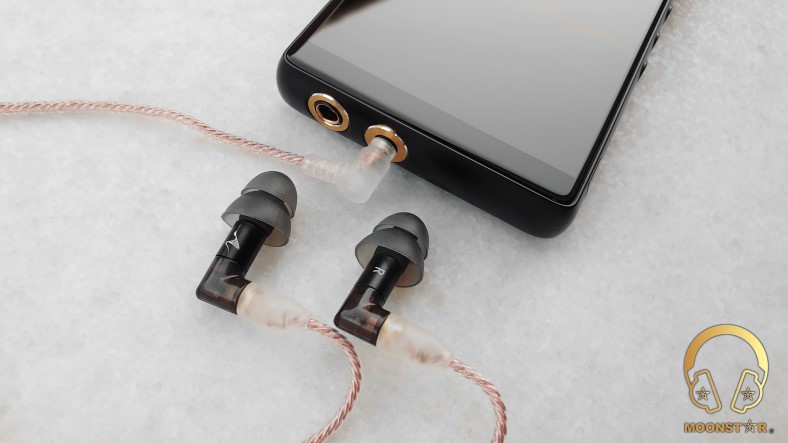
The Bass:
The subbass region of both the Akoustyx R-210 and R-220 are pretty similar with a moderate amount of intensity. The subbass region of both IEM’s has an average rumble and extension which is not very high. The subbass of the R-220 has better speed, while R-210 shows a warmer tonality.
The midbass region of the R-220 is lightly pronounced, close to neutral and pretty fast, while the R-210 has a higher midbass intensity and impact than the R220. The midbass of the R-210 sound fuller, warmer and are more impactful than the R-220. The midbass of the R-220 are faster, mildly pronounced and pretty linear compared to those of the R-210.
The bass of both IEM’s is in general pretty fast and thigh in its presentation and doesn’t show any negative situations like muddiness or mixings, while the general bass speed is better while listening to the R-220.
The bass character of the R-220 is neutral and sterile, while the R-210 offers more musicality and warmness.

The Midrange:
The Akoustyx R-210 has a slightly warm and pretty musical midrange with an average level of clarity, while the R-220 shows a more neutral, vivid and transparent presentation compared to the R-210.
The midrange of the R-210 has a soft and emotional character, while the R-220 sounds sterile, lively and neutral. The lower midrange of the R-210 has more depth and is full-bodied, while the R-220 sounds thinner and more neutral in this area.
The male vocal presentation of the R-210 shows a better musicality, while the R-220 offers a more neutral and clear male vocal presentation. The upper midrange of the Akoustyx R-220 is more pronounced and shows better extension, which is the main reason while female vocals are livelier, transparent and detailed compared to the R-210. The female vocal presentation of the R-210 is warmer and slightly more musical.
While the female vocals of the R-210 are softer and forgiving, the vocals of the R-220 are sharper, brighter and do not forgive songs with poor record quality.

The Upper Midrange & Treble:
The Akoustyx R-210 has a mildly pronounced and fairly controlled upper midrange tuning, while the R-220 shows a stronger upper midrange emphasis and higher brightness, which is also more neutral in its tonality.
Instruments like violins, flutes and pianos have strong extension, brightness and detail retrieval while I have listen to the Akoustyx R-220. The same instruments do sound softer, slightly more musical and have a shorter extension with the R-210, compared to those of the R-220.
The treble range of the Akoustyx R-220 is more pronounced and shows higher intensity than the rest of the sound spectrum and has a good level of airiness. The treble presentation of the R-210 is softer, slightly more controlled and warmish. The R-220 is superior to the R-210 in terms of treble quantity, extension and brightness. The hits of instruments like Hi-Hats and cymbals are more pronounced with the R-220. The treble extension of Hi-Hats and cymbals is shorter while listening to the Akoustyx R-210.
The Akoustyx R-220 is an IEM that performs pretty well above its price range in terms of treble performance (detail, extension, etc.)

The Soundstage:
Both IEM’s have a suitable soundstage character for a fairly precise placement and separation of instruments and vocals. The soundstage of the Akoustyx R-220 has more width, depth and a higher level of airiness compared to the R-210. The Akoustyx R-210 has an average performance in terms of soundstage depth and width.
Some Short Comparisons:
Akoustyx R- 210 versus FiiO F9 Pro:
The Akoustyx R-210 has a warmer, softer and slightly bassier sound character than those of the FiiO F9 Pro, while the F9 Pro has a closer to neutral and brighter tonality.
The R-210 has the upper hand in terms of subass/midbass quantity and extension. The midrange of the FiiO F9 Pro is more upfront, transparent but a bit thin in tonality compared to the Akoustyx R-210.
The R-210 is more successful with male vocals, while the F9 Pro is more suitable for female voices. The upper midrange and treble of the R-210 is softer and slightly warmer in tonality, compared to the F9 Pro which offers more clarity, brightness and extension.
The FiiO F9 Pro has the upper hand in terms of soundstage width, while the R-210 shows slightly better depth.

Akoustyx R- 210 versus Brainwavz B200:
The Brainwavz B200 has a more neutral and brighter tonality compared to the Akoustyx R-210, which offers a warmer and more entertaining presentation. The subbass region of the B200 shows less depth and extension than the R-210. The midbass of the B200 have a linear character, while the R-210 offers more intensity and impact.
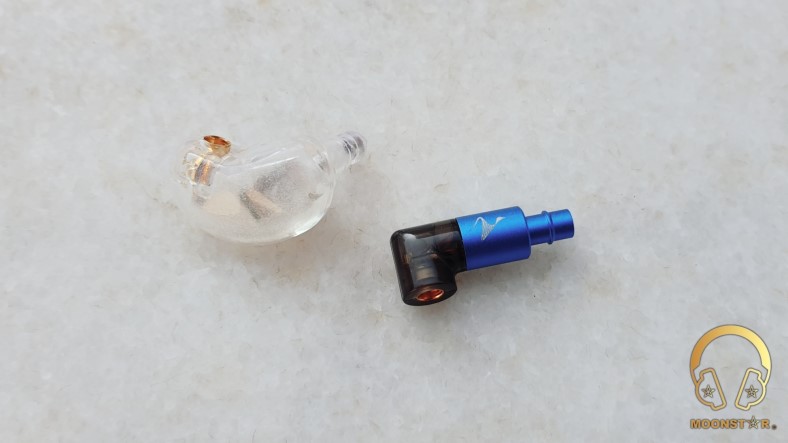
The midrange of the Brainwavz B200 sound thinner, brighter and a bit dry in tonality compared to the Akoustyx R-210. The R-210 is superior in terms of male vocals, while the B200 is more successful with female vocals due to its upper midrange tuning. The upper midrange and treble region of the B200 sounds clearer, more neutral and has better extension than the R-210 which shows a warmer, more musical and forgiving tuning.
The Brainwavz B200 has the upper hand in terms soundstage width and airiness, while the Akoustyx R-210 offer better depth.

Akoustyx R- 220 versus Campfire Audio Comet:
The Campfire Audio Comet has a warmer, slightly softer and musical tonality than the Akoustyx R-220. Both the subbass and the midbass regions of the Comet have better depth, while the R-220 is superior in terms of speed and tightness.
The midrange of the Akoustyx R-220 shows more clarity and has a better level of detail retrieval. The Comet has the upper hand in terms of male vocal performance, while the R-220 is superior to the Comet in terms of detail and extension of female voices.
The Akoustyx R-220 has a stronger upper midrange emphasis and better treble extension than the Campfire Audio Comet. The treble range of the Comet is a bit recessed, slightly warmish and soft in tonality.
The Akoustyx R-220 has the upper hand in terms soundstage width and airiness, while the Campfire Audio Comet shows better soundstage depth.
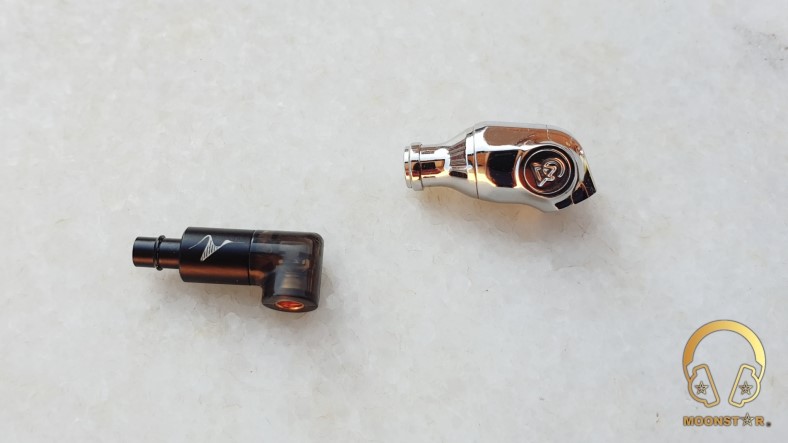
Akoustyx R- 220 versus iBasso IT01s:
The iBasso IT01s has a V shaped sound signature, while the Akoustyx R-220 shows a more neutral tuning. The subbass and midbass range of both In-Ear Monitors is mildly pronounced, while the IT 01s has the upper hand in terms of midbass impact and extension.
The midrange of the R-220 is more forward positioned and slightly more transparent compared to the IT01s, while both IEM’s are more successful with female vocals than male voices due their upper midrange tuning.

The treble range of the Akoustyx R-220 is a bit more pronounced and vibrant than those of the iBasso IT01s and has the upper hand in terms of treble quantity, airiness and extension.
Both the Akoustyx R-220 and iBasso IT01s sharing a very close performance in terms of soundstage depth and width.

Conclusion:
The company Akoustyx has made similar looking IEM’s that are sharing quite different sound characteristic that are highly successful with diverse music genres. So, if you are looking for an IEM with a musical, warmish and entertaining tuning, the R-210 will be the right choice for you. But if you prefer an In-Ear monitor with a more neutral, transparent and detailed sound the R-220 will satisfy you at this price range. The pretty rich accessories package and the cable with microphone are also some nice additions.
Pros and Cons:
- + Overall Musicality (R-210)
- + Midrange Clarity & Detail (R-220)
- + Male Vocal Performance (R-210)
- + Female Vocal Performance (R-220)
- + Bass Speed (R-220)
- + Treble Detail & Extension (R-220)
- + Comfort and Accessories (Lots of Ear Tips and Ear Hooks)
- – Midrange Clarity & Treble Extension (R-210)
- – Soundstage Width (R-210)
- – A little bass light (R-220)


